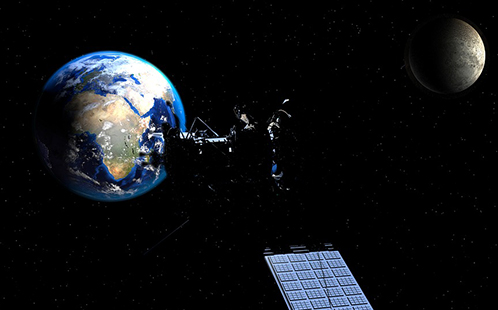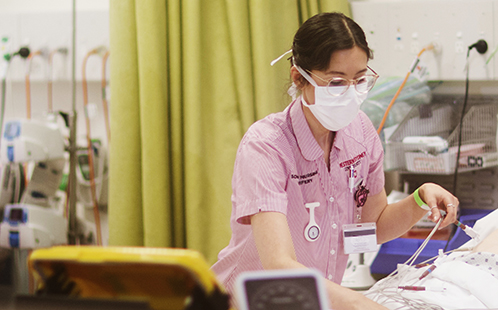New ‘star tracking’ camera to advance space monitoring capabilities

The Department of Defence has announced funding for Western Sydney University researchers to develop advanced, new camera technology that could transform the way we monitor moving objects in space.
Researchers from the University's Biomedical Engineering and Neuroscience (BENS) Research Program within the MARCS Institute are sharing in $5.7 million, allocated to 22 Australian universities under the Next Generation Technologies Fund.
Professor André van Schaik says the MARCS research team are working to develop a "space monitoring system" that can be deployed on a small satellite.
"There is a lot of debris in space, which poses a danger for intelligence equipment including satellites – and for Earth, if the object is in our direct path," says Professor van Schaik.
"For this reason it is important to be able to monitor objects in orbit around the Earth, and to track and work out the path of debris. If we can accurately determine the position of these space objects, we are then able to avoid collisions."
To effectively capture the movement of objects in space, Professor van Schaik says devices need to be capable of imaging stars, satellites and debris over a large range of light intensities and velocities. To remain functional in Earth's near orbit, devices also need to be low-power, light-weight, and tough enough to withstand radiation in the atmosphere.
"Cameras that are currently being used in space require long exposure times to see faint objects, and fast moving objects result in streaky images," say Professor Schaik.
"The Western Sydney researchers are investigating the use of high-tech event-based cameras, inspired by biological visual systems, such as the human eye."
Professor van Schaik says ground-based tests have so far shown that the event-based cameras are capable of capturing fast moving bodies without requiring high frame rates or producing large amounts of data – making them ideal for use in space.
"Each photoreceptor in the camera operates independently and only signals changes in the image. Since most of space looks empty and black, the amount of data that needs to be transmitted is significantly reduced, resulting in reduced power consumption and bandwidth requirements," he says.
BENS researcher Dr Gregory Cohen, who developed the research concept, will head the project with the assistance of PhD candidate Saeed Afshar.
The research project is expected to take 12 months, after which a prototype will be delivered to the Defence Science and Technology Group, within the Department of Defence.
Western Sydney Minister for Defence Industry, the Hon Christopher Pyne MP, said the Next Generation Technologies Fund (opens in a new window) was aimed at engaging industry and academia to research priority areas identified in the 2016 Defence Industry Policy Statement.
"The Next Generation Technologies Fund allows us to draw on the expertise in Australian universities to initiate research into emerging technologies of interest to Defence," Minister Pyne said.
The Western Sydney team are experts in the field of Neuromorphic Engineering – a subfield of electrical engineering that applies knowledge of how signals are processed in the brain to build electronic signal processing systems that vastly outperform current digital signal processing systems.
With this expertise, the team are well equipped to develop the algorithms and electronics that are required for the star tracking cameras, and to process and interpret the resulting data.
In a highly competitive field, a total of 428 project proposals were received from 31 universities across Australia. The Western Sydney University project was one of only 59 projects to receive funding.
ENDS.
2 June 2017
Latest News

Western Sydney University receives transformational donation to support LGBTIQA+ community
Western Sydney University has welcomed a philanthropic donation from The Brennan Lynch Foundation.

Western Sydney University ranks among world’s best for 23 subjects
The University has been named as one of the world’s top universities for the study of 23 subjects in the latest edition of the QS World University Rankings by Subject, including being ranked in the top 50 for Nursing.

Western Sydney University receives landmark $7.9 million philanthropic gift from Harvey Norman to launch leadership academy, empowering young women in Western Sydney
Western has welcomed a landmark donation to establish the Harvey Norman® Young Women’s Leadership Academy Led by Katie Page.
Mobile options:

